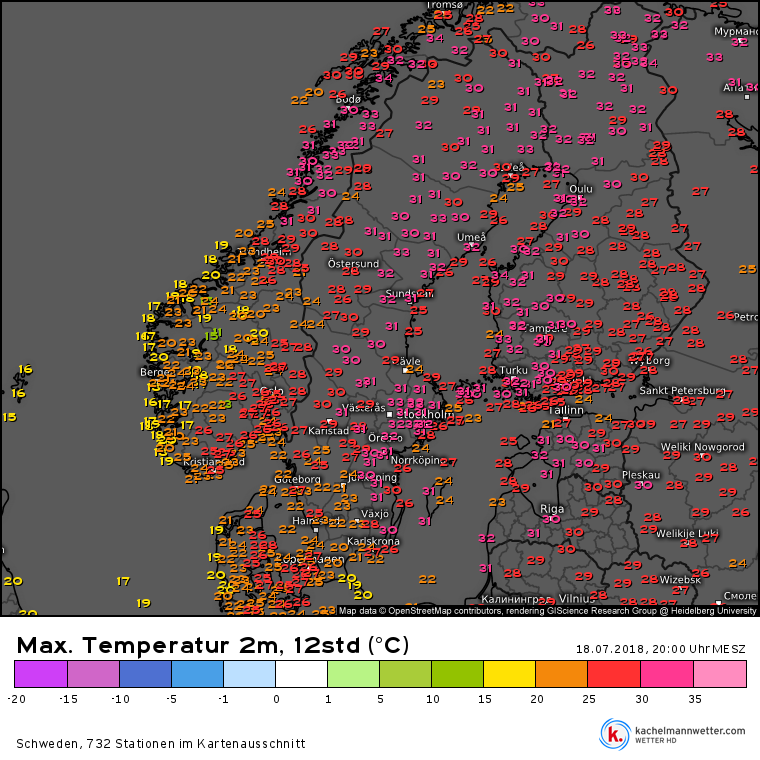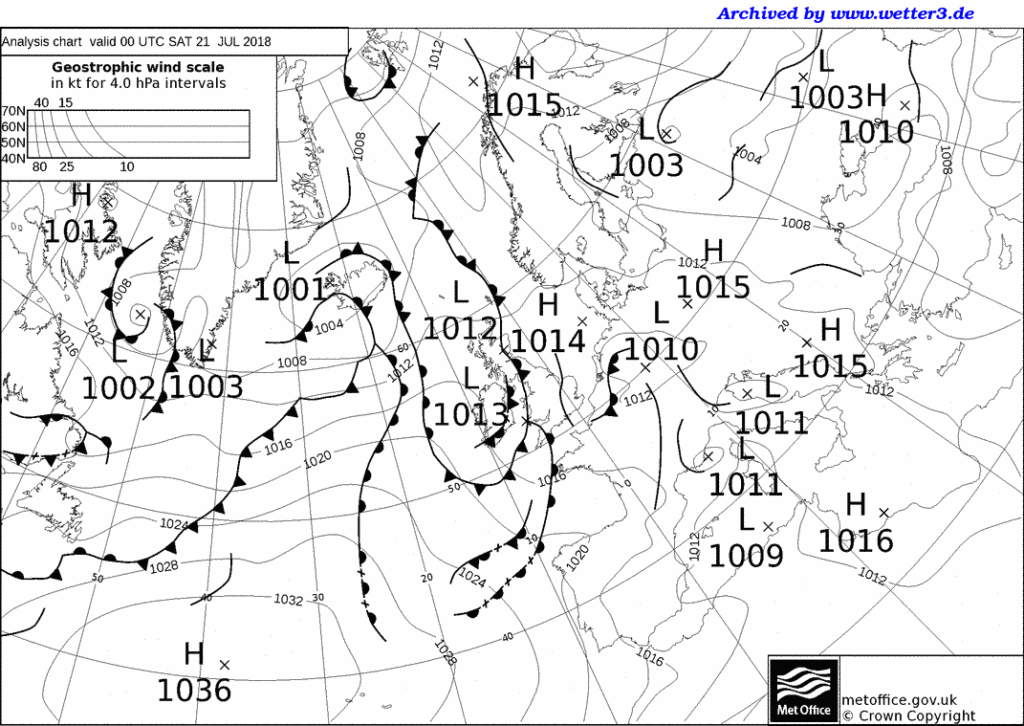Temperatures have well exceeded 30°C in much of Scandinavia for the past several days, including as far north as the Arctic circle. Below is a map of the maximum temperatures recorded on the 18th of July, though past days have all brought similarly intense heat to Scandinavian countries:

The reason for these unusually warm temperatures is a high-pressure ridge which is currently situated over northeastern Europe, including mainly the Scandinavian countries of Sweden and Finland, the north of Norway and the northwest of Russia, and bringing temperatures as high as 33.5°C in Bardufoss (69° N in Norway, registered 18th of July).

And for now, the hot weather is expected to persist. The heat, and especially the dryness (which is a problem in much of Europe currently) are posing some serious challenges, with numerous wildfires having broken out in Sweden, and at least in the upcoming days, little relief looks to be on its way.
Scorching Sweden. Fires rage in Karbole as heatwave continues to grip Scandinavia. pic.twitter.com/kurJU9Esol
— Al Jazeera Weather (@AJEWeather) July 20, 2018







